Electric Circuit Analysis: Chapter - 2: Network Theorems - DC
Norton's Theorem
Statement, Proof, Circuit Diagram, Formula, Solved Example Problems
To calculate IN : For the given network, short circuit the load terminal and then measure the current passing through the load terminal that gives short circuit current (IN) through AB.
NORTON'S THEOREM
Statement
Any
two terminal network containing linear, passive and active elements may be
replaced by an equivalent current source IN in parallel with a
resistance RN where IN is the current flowing through a short circuit placed
across the terminals AB and RN is the equivalent resistance of the network as seen
from the two terminals with all independent sources are replaced by their
internal resistances.
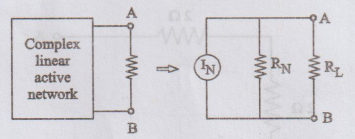
where
IN
→ Short circuit current through AB
RTh
→ Thevenin's Resistance
Explanation
To
calculate IN
For
the given network, short circuit the load terminal and then measure the current
passing through the load terminal that gives short circuit current (IN)
through AB.
To
calculate Rth
1.
Remove the load resistance RL.
2.
Short circuit the voltage source (Replace the voltage source by its internal
resistance).
3.
Open circuit the current source (Replace the current source by its internal
resistances).
4.
Then, measure the resistance at load terminal that gives the Norton's
resistance (RN).
Proof
Consider
the given network consisting of voltage source V and resistors R1, R2,
R3 and RL.
To
measure the load current IL, the given network is converted into its
Norton's equivalent.
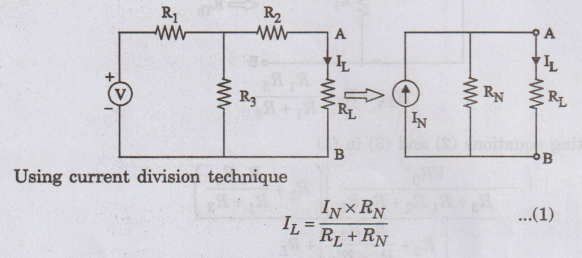
To
calculate IN
Short
circuit the load terminal AB.
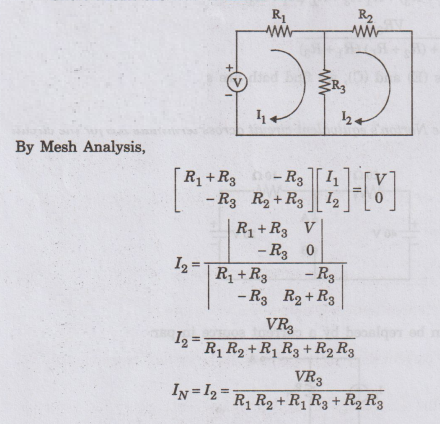
To
calculate RTh
Short circuit the voltage source 'V
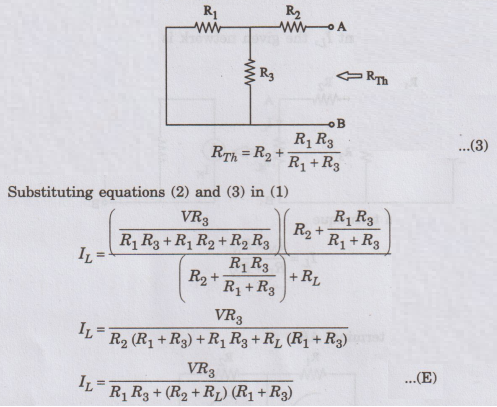
Comparing
equations (E) and (C), we find both are same. Hence, the theorem is proved.
EXAMPLE
24:
Determine Norton's equivalent circuit across terminals AB for the circuit
shown in figure.
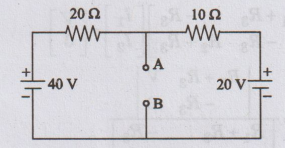
Solution:
The
above circuit can be replaced by a current source in parallel with a resistor,
as shown in figure.
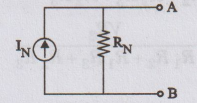
where
IN
= The current passing through the short circuited output terminals AB
RTh
= Norton's resistance
To
find RTh
Short
circuit the voltage sources.
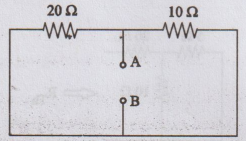
Here,
20 Ω and 10 Ω are connected in parallel.
RTh
= 20 × 10 / 20 + 10 = 6.66Ω
To
find IN
We
have to find the current passing through the terminals A and B. It is shown in
figure.
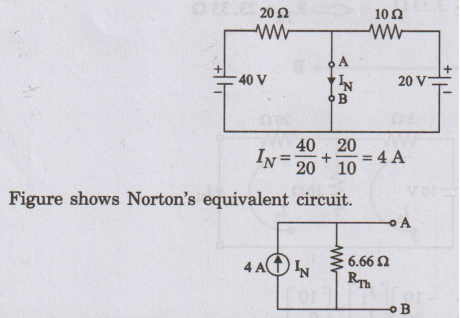
EXAMPLE
25: For the circuit shown in figure, find the current
through the 30 22 load resistor using Norton's theorem.
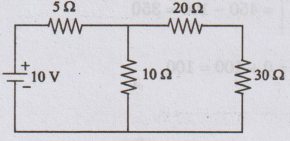
Solution
:
Figure
shows Norton's equivalent circuit.
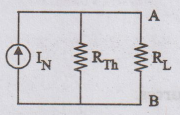
To
find RTh
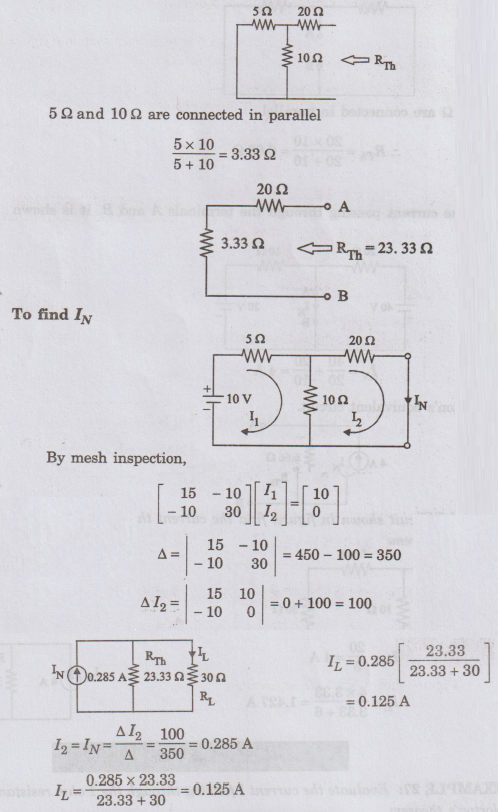
Current
through 30Ω is 0.125 A
EXAMPLE
26: Using Norton's theorem, find current through 6 2
resistance shown in figure.
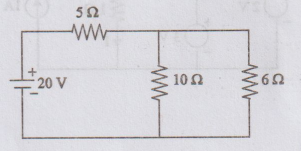
Solution:
Figure
shows Norton's equivalent circuit.
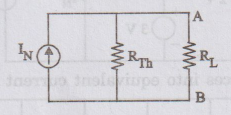
To
find RTh
5Ω
and 10 Ω are connected in parallel.
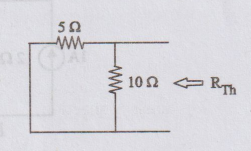
RTh
= 5 × 10 / 5 + 10 = 3.33 Ω
To
find IN
No
current in 10 Ω resistance because, it is short circuited.
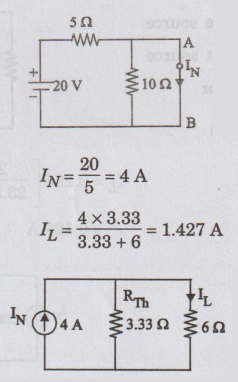
Current
through 6 Ω is 1.427 A
EXAMPLE
27:
Evaluate the current I flowing through the 1 ohm resistance, by applying
Norton's theorem.
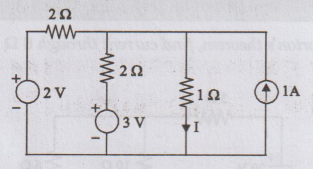
Solution:
To
calculate IN
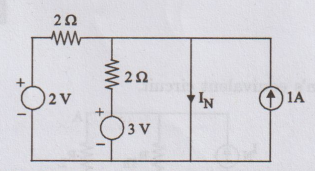
Convert
the voltage sources into equivalent current sources
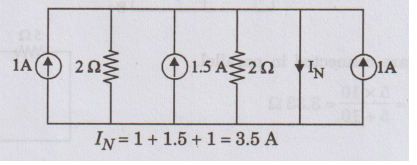
To
calculate RTh
→
Short circuit the voltage source
→
Open circuit the current source
→
Remove the load resistor
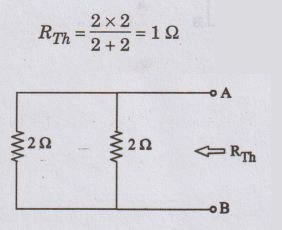
Norton's
Equivalent Circuit
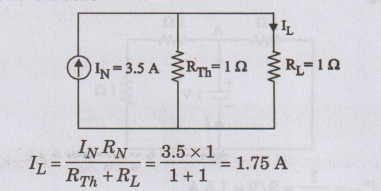
EXAMPLE
28:
Determine the current through the resistance RL using Norton's theorem.
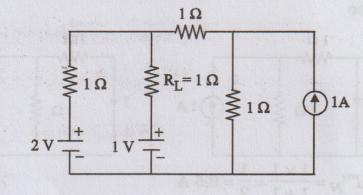
Solution:
To
calculate RTh
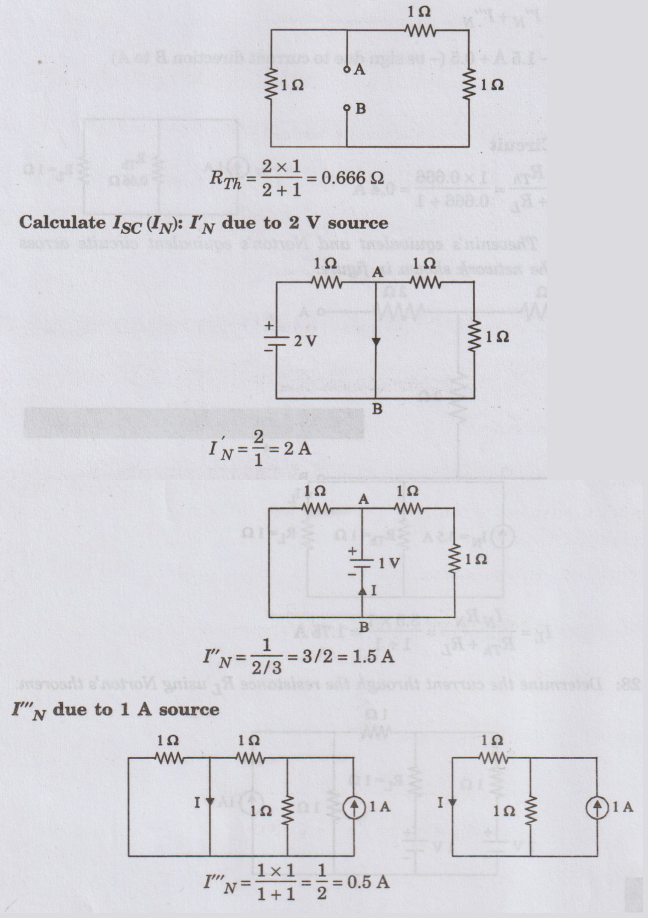
According
to Superposition theorem
IN
= IN + I"N + I"N
=
2A - 1.5 A + 0.5 (-ve sign due to current direction B to A)
IN
= 1A
Norton’s
Equivalent Circuit

EXAMPLE
29: Obtain Thevenin's equivalent and Norton's equivalent
circuits across terminals A and B for the network shown in figure.
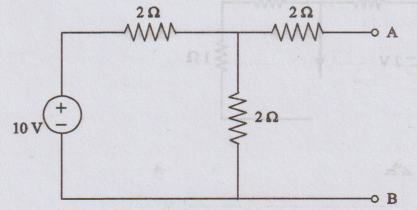
Solution:
(i)
Thevenin's equivalent circuit:
Thevenin's
resistance RTh
Short
circuit the voltage source.
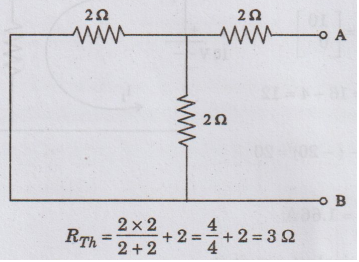
Thevenin's
voltage Voc
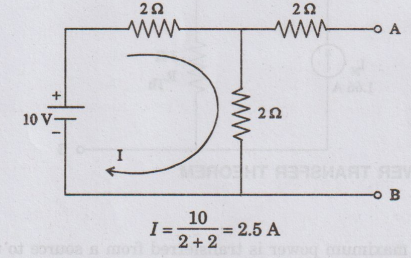
Voltage
across AB = Voltage across 2Ω resistor = 2 × 2.5 = 5V
VOC
= 5V
Thevenin's
equivalent circuit is
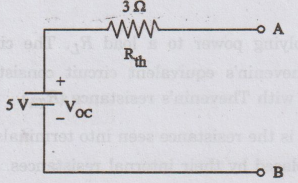
(ii)
Norton's equivalent circuit:
RTh
= 3 Ω
Norton's
current (IN)
By
mesh inspection
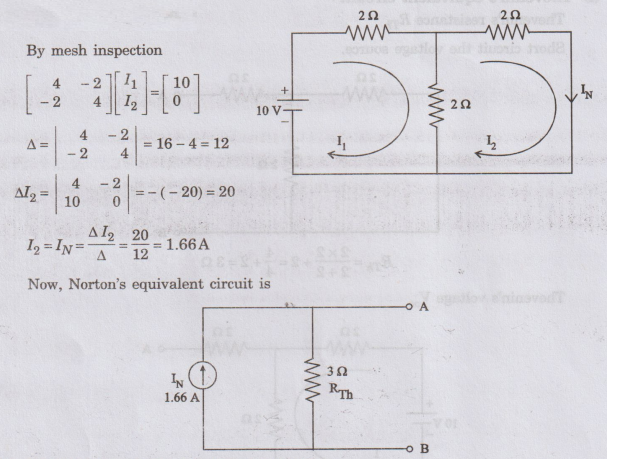
Electric Circuit Analysis: Chapter - 2: Network Theorems - DC : Tag: : Statement, Proof, Circuit Diagram, Formula, Solved Example Problems - Norton's Theorem